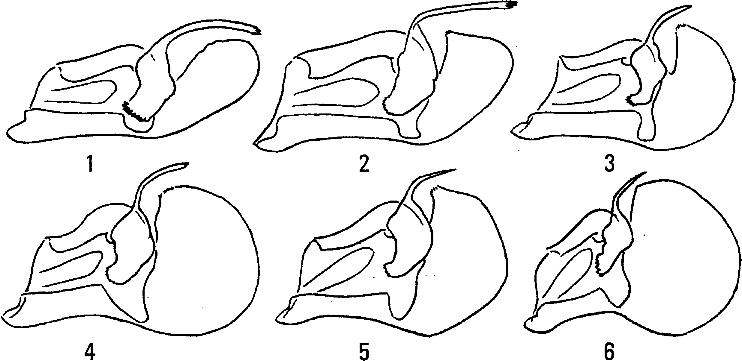LEPIDOPTERA
H E S P E R I I D A E Latreille, 1809
PYRGUS Hubner, [1819]
Pyrgus alveus (Hubner, [1803])
Pyrgus alveus (Hubner, [1803])
![Pyrgus alveus (Hubner, [1803])](../image2/hesperid/hes-palv.jpg)
• TYPE LOCALITY. "Suddeutschland, Schwabische Alb, Umg. Mehrstetten" [S. Germany]. Neotype selected by Renner (1991).
• RANGE. NW. Africa (Morocco, Algeria), Europe to Fennoscandia, Asia Minor and the Caucasus, eastwards across Siberia and Central Asia to the Far East and E. China.
• DISTRIBUTION AND VARIATION. The European part, the Caucasus, Dzhungarsky Alatau, Tian-Shan, Siberia from the Altai Mts. to the Far East (Yakutia) and the Ussuri region. Highly variable in size and spotting pattern. The nominate subspecies occurs in the European part and Siberia; the other known subspecies are: ssp. Scandinavians Strand, 1903 (Fennoscandia), ssp. iliensis Reverdin, 1912 (Dzhungarsky Alatau, Tian-Shan), ssp. sifanicus Grum-Grshimailo, 1891 (described from Central Asia), ssp. schansiensis Reverdin, 1915 (NE. China, the S. Amur and Ussuri regions).
• TAXONOMIC NOTES. P. alveus seems to be in fact a superspecies containing several elements which have not yet reached a stage of complete differentiation; the taxonomy of the complex is currently being revised.
• HABITATS AND BIOLOGY. Open grassy habitats, forest edges and clearings, hill slopes, mountains up to 2,500 m a.s.l. and even higher. Flight period: end of June to August in a single generation; in the south, two generations can be observed. Host plants: Helianthemum spp. (H. nummularium and some others), Potentilla spp., also Agrimonia spp. and Polygala comosa have been recorded (Eckstein, 1913; de Jong, 1972; etc.). Eggs or larvae hibernating.
• SIMILAR SPECIES. P. cinarae: UPS white spots wide and touching each other, UNH ground colour light, yellowish. P. armoricanus: smaller, UPS lighter, UNH ground colour brownish, spots smaller; P. speyeri: spots reduced, UNH brownish; P. serratulae: UNH white spots rounded, separated by veins.
Photo and text: Guide to the BUTTERFLIES OF RUSSIA and adjacent territories Volume 1. PENSOFT, Sofia - Moscow. 1997

1 - P. serratulae major (Nakhichevan);
2 - P. cinarae (Armenia);
3 - P. armoricanus persicus (Nakhichevan);
4 - P. alveus (Teberda, N. Caucasus);
5 - P. speyeri (S. Ussuri region);
6 - P.jupei (Nakhichevan)